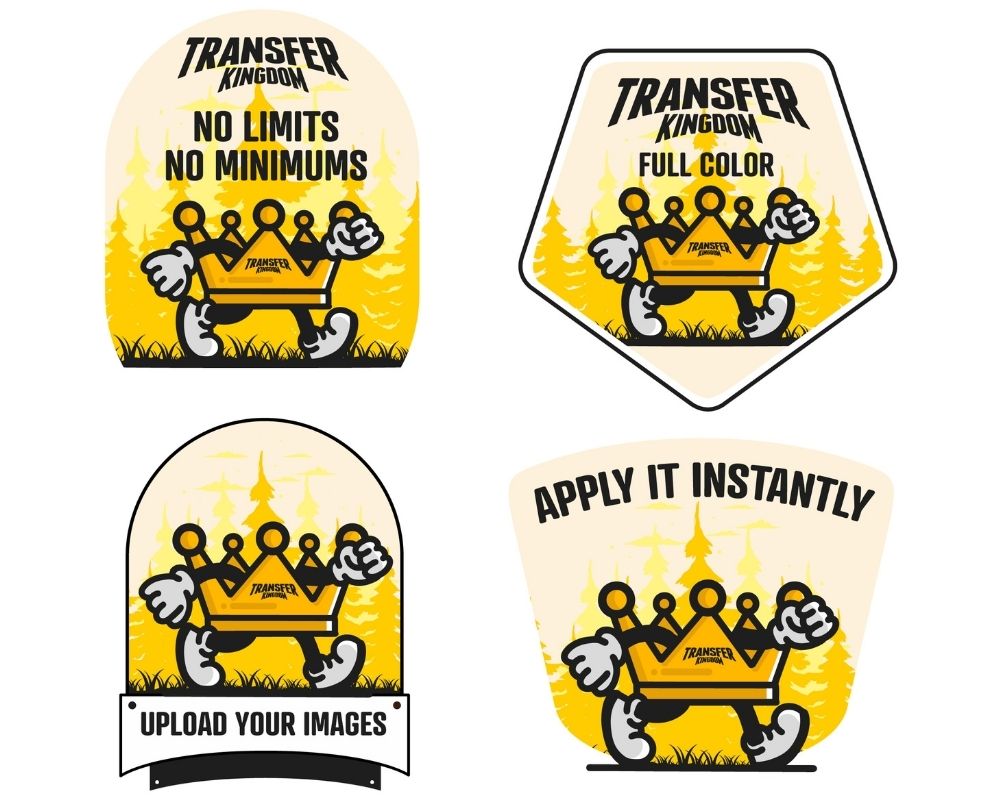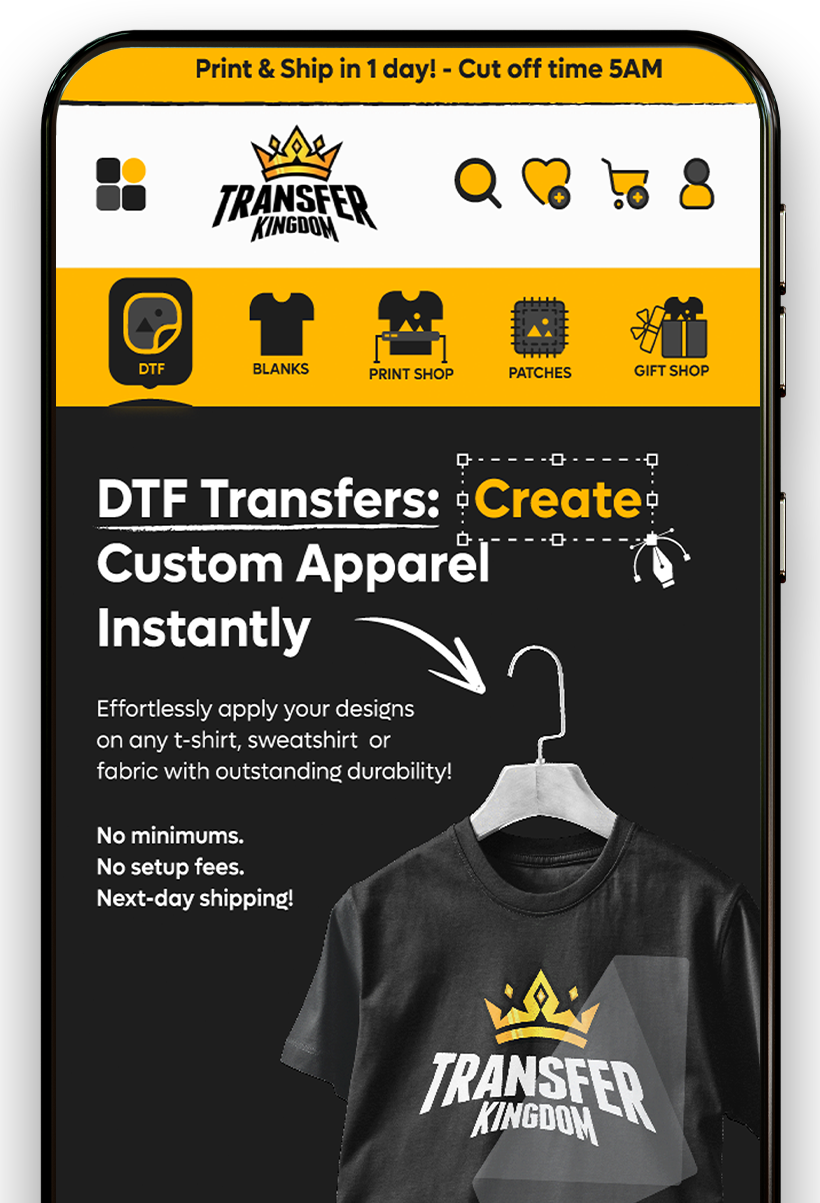How to Create Custom Apparel with DTF Transfers: Step-by-Step Guide

Table of Contents

The Definitive Guide on How to Create Custom Apparel with DTF Transfers
Direct-to-Film (DTF) technology has fundamentally changed the game for creators, small businesses, and fashion brands. It provides a powerful method to produce vibrant, durable, full-color designs on nearly any fabric. But a great tool is only as good as the person using it. Understanding the complete workflow is the key to unlocking its full potential.
This comprehensive guide will walk you through the entire journey of how to create custom apparel with DTF transfers, from the digital canvas to the final, professional-quality garment. We’ll cover artwork preparation, the application process, and the pro tips you need to get it right every single time.
Phase 1: Perfecting Your Artwork for Print
Before a single drop of ink is used, the process begins on your computer. The quality of your digital file directly dictates the quality of the final print. This is the single most important phase to get right when you create your own custom DTF transfers.
Resolution is Non-Negotiable: Your design file must be at least 300 DPI (Dots Per Inch) at the final intended print size. If you design something at 3x3 inches and scale it up to 12x12 inches, it will become pixelated and blurry. Always start your design at the correct size and resolution.
Use Capable Design Software: Professional-grade software like Adobe Illustrator or Photoshop offers the most control. These programs allow you to manage layers, colors, and transparency with precision. If you use a more basic tool like Canva, it's critical to ensure you can export your file with a fully transparent background.
The Power of Transparency (PNG Files): The gold standard file format for DTF is a PNG with a transparent background. This ensures that only your design elements are printed, not a colored box around them. This is what allows for free-floating graphics on your apparel.
Color Profile (CMYK): Your design should be created in a CMYK color profile. Your screen displays colors in RGB, but printers use CMYK (Cyan, Magenta, Yellow, Black). Designing in CMYK from the start helps ensure the colors on your final print are as close as possible to what you see on screen.
For those looking to maximize efficiency, learning how to use a DTF gang sheet is a crucial next step, allowing you to print multiple designs at once and save significant costs.
Phase 2: The DTF Application Process - A Step-by-Step Breakdown
This is the hands-on part where your digital design becomes a physical product. Precision and following the steps in order are essential for getting the most out of your custom DTF transfers.
Step 1: Get Your Supplies Ready
Before you begin, gather everything you need to ensure a smooth workflow. You will need:
Your ready-to-press DTF Transfers
The blank garment (t-shirt, hoodie, etc.)
A quality heat press
A Teflon sheet or parchment paper
A lint roller

Step 2: The Pre-Press (Do Not Skip This!)
Set your heat press to the correct temperature for your fabric (see our chart below). Place your garment on the lower platen and press it for 5-7 seconds. This crucial step does two things: it removes any hidden moisture from the fabric and smooths out any wrinkles, creating a perfect canvas for your transfer.

Step 3: Positioning the Transfer
Lint roll the pre-pressed area to remove any stray fibers. Now, carefully place your custom DTF transfer onto the garment. Use the collar, seams, and sleeves as reference points to ensure your design is perfectly centered and straight. For detailed placement help, you can use our guide to sizing and positioning transfers.

Step 4: The Main Heat Press
Once your transfer is perfectly positioned, place a Teflon sheet or piece of parchment paper over the top of it. This protects the transfer and your heat press. Close the press, lock it down with firm pressure, and press for the recommended time. The combination of heat and pressure activates the adhesive on the back of the transfer, bonding it to the fabric fibers.

Step 5: Peel and Reveal
This is the most critical part of the process. Adhere to the instructions provided with your film—either "hot peel" or "cold peel."
Hot Peel: You can peel the film immediately after the press opens.
Cold Peel: You must let the garment and transfer cool down completely before peeling.Start at one corner and peel the film back smoothly and at a consistent angle. Do not yank it off.

Step 6: The Finishing Press
After you’ve peeled the film away, your design is on the shirt. For maximum durability and a professional matte finish, cover the design again with your parchment paper and press for another 5-10 seconds. This final press embeds the ink further into the fabric, increasing its softness and washability. This is how you create custom apparel with DTF transfers that lasts.

Heat Press Settings Guide
The settings below are a great starting point for standard transfers. Note that specialty transfers, such as glitter DTF transfers , may require slightly different settings, so always check the product instructions.
| Fabric Type | Temperature Range | Time | Pressure |
| 100% Cotton | 300-320°F (150-160°C) | 12-15 Seconds | Medium-Firm |
| 50/50 Cotton/Poly Blends | 280-300°F (140-150°C) | 10-12 Seconds | Medium |
| 100% Polyester & Synthetics | 270-290°F (132-143°C) | 8-10 Seconds | Medium |
| Tri-Blends | 270-290°F (132-143°C) | 8-10 Seconds | Light-Medium |
Frequently Asked Questions
Why did my transfer come out patchy or incomplete?
This is almost always due to uneven or insufficient pressure. Ensure your heat press is applying firm, consistent pressure across the entire platen. If it's a manual press, make sure you have locked it down firmly.
Can I use a household iron instead of a heat press?
We strongly advise against it. A home iron cannot provide the consistent temperature or the firm, even pressure required to properly cure the DTF adhesive. This will lead to the transfer peeling off, likely after the first wash.
What does "cold peel" mean?
Cold peel means you must wait for the transfer and garment to be completely cool to the touch before you remove the clear carrier film. Peeling it while still warm will ruin the transfer.
How should I wash apparel with a DTF transfer?
To ensure a long life for your custom apparel, turn the garment inside out, wash in cold water on a gentle cycle, and tumble dry on low heat or hang it to dry. Avoid bleach and fabric softeners.
Why is pre-pressing the garment so important?
Fabrics, especially cotton, retain moisture from the air. Pressing the garment first evaporates this moisture. If you apply a transfer to a moist garment, the steam created during the press will prevent the adhesive from bonding correctly.
My colors look dull after pressing. What happened?
This can happen if the temperature of your heat press is too high for the fabric you are using, which can "scorch" the ink. Lower your temperature slightly and try again. Always test on a spare piece of fabric if you are unsure.
Can DTF be applied to fabrics other than t-shirts?
Yes! This is a major advantage. You can apply DTF transfers to hoodies, tote bags, hats (with a hat press), canvas, denim, and more, which is why it's a top choice for creating diverse lines of custom apparel with DTF transfers.
What makes a good DTF transfer?
what makes a quality DTF transferA good transfer is made with high-quality inks, film, and adhesive powder. The print should be sharp and the colors vibrant. You can learn more about what makes a quality DTF transfer in our foundational guide.
Do I need a computer to do this?
You need a digital device to create your art files, but if you order your designs online, the only physical equipment you need is a heat press.
How do I know what size to make my design?
Design size depends on the garment size (e.g., a toddler shirt vs. an adult 2XL) and placement. A standard adult chest logo is typically 10-12 inches wide. For more detailed help, our transfer sizing guide is a great resource.








